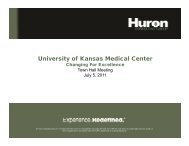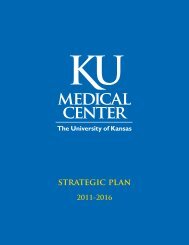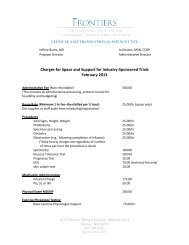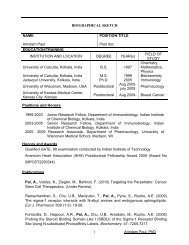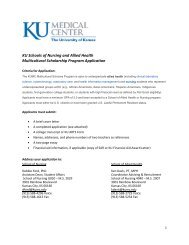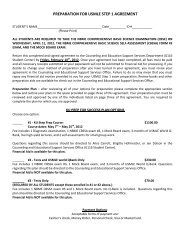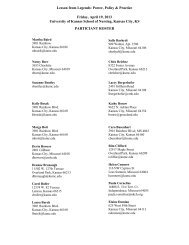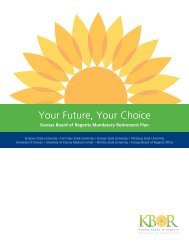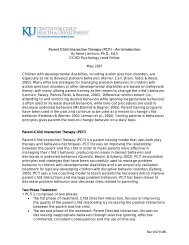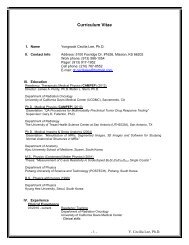Clinical Orientation Manual - University of Kansas Medical Center
Clinical Orientation Manual - University of Kansas Medical Center
Clinical Orientation Manual - University of Kansas Medical Center
Create successful ePaper yourself
Turn your PDF publications into a flip-book with our unique Google optimized e-Paper software.
Fluids: 500cc D5LR (list here the amount and type <strong>of</strong> fluids given during the procedure,<br />
eg. NS, blood, albumin, etc. You can find this by looking on the<br />
anesthesiology record or by asking the anesthesiologist or surgical nurse.)<br />
EBL: 50cc (This is the estimated blood loss during the procedure, as shown on the<br />
anesthesiologist’s record.)<br />
Tubes/Drains: NG to low intermittent sxn, JP drain in RUQ<br />
Specimens: Gall bladder sent to surgical pathology<br />
Complications: None<br />
Condition: To PACU in (good, fair, stable, poor, critical) condition<br />
*There is a good template in the EMR for both pre-operative and post-operative notes. They are<br />
generally very basic.<br />
Post-Op Orders:<br />
<strong>Medical</strong> students are currently unable to write orders in O 2, so you will probably not have the<br />
opportunity to write post-op orders if you are at KUMC for the entire Surgery rotation. The EMR<br />
at the VA does allow medical students to write orders that must be cosigned by a resident or<br />
attending, and you may have the opportunity to write orders if you are on a rural rotation.<br />
Some services still use paper forms for post-op pt instructions which you may be able to help fill<br />
out.<br />
Post-Op Orders<br />
1) Procedure: (eg. S/P cholecystectomy)<br />
2) Allergies: (eg. NKA )<br />
3) Disposition: (eg. Return to 5120 when stable, admit to ICU, etc.)<br />
4) Vital Signs: (This determines how <strong>of</strong>ten vitals will be taken after the patient leaves the RR,<br />
eg. Vitals Q15 minx 8, Q30 min x4, Q4 hrs x 6, then Q shift.)<br />
5) Diet: (eg. NPO, advance diet as tolerated, etc.)<br />
6) Activity: (eg. Bedrest, bedrest c BRP, etc.)<br />
7) Tubes/Drains: (eg. NG to low intermittent Gomco, foley to DD, etc)<br />
8) Resp. Care: (eg.TC&DB Q2 hrs x 24 hrs, incentive spirometry, 02, etc.)<br />
9) Meds: (eg. Reorder patient’s pre op meds if appropriate,<br />
Antibiotics, IV fluids, etc.)<br />
10) Call HO if: (eg. Call HO for temp >38.5)<br />
Remarks: Residents and staff appreciate initiative. This means being an active seeker <strong>of</strong><br />
knowledge. Recognize that the flow <strong>of</strong> information is from you to the intern, intern to the chief<br />
resident, and chief to the attendings. Do not say you have lecture when you do not. If you have<br />
broken scrub on a case to attend lecture, it is considerate to return to the OR after lecture to<br />
make sure the surgery has ended or you are excused to go home.<br />
Advice:<br />
On your first day, talk to your chief resident about what duties he/she expects you to<br />
perform.<br />
One <strong>of</strong> the keys to a good clinical performance evaluation is teamwork and helping things<br />
run smoothly for the residents.<br />
If you know you are going to scrub out <strong>of</strong> a case early for class, let it be known at the start<br />
<strong>of</strong> the case.<br />
Keep the patient list up-to-date – ask your resident about this on the first day as this is vital<br />
to rounding/chief resident.<br />
38



